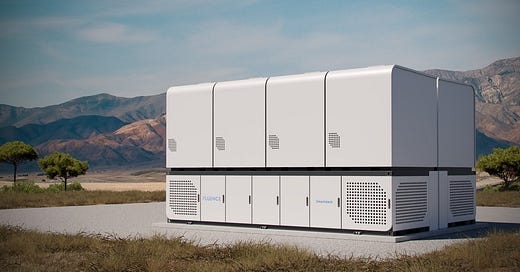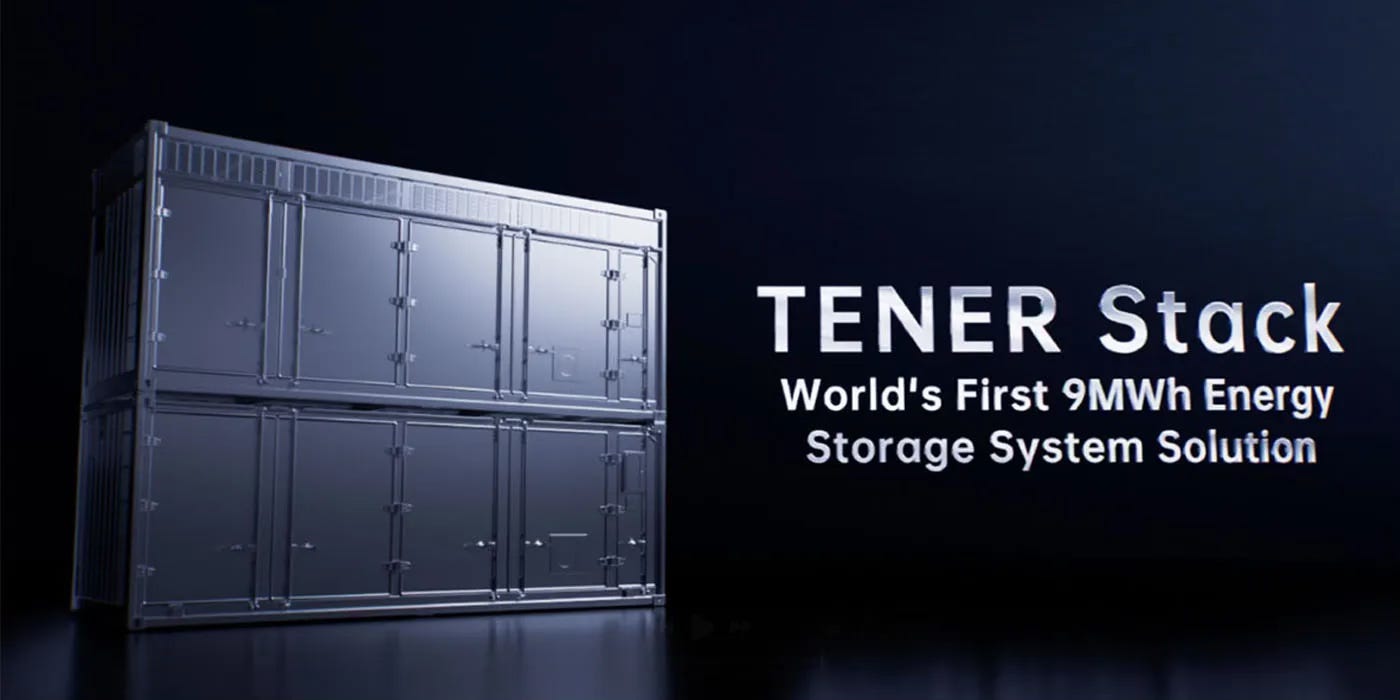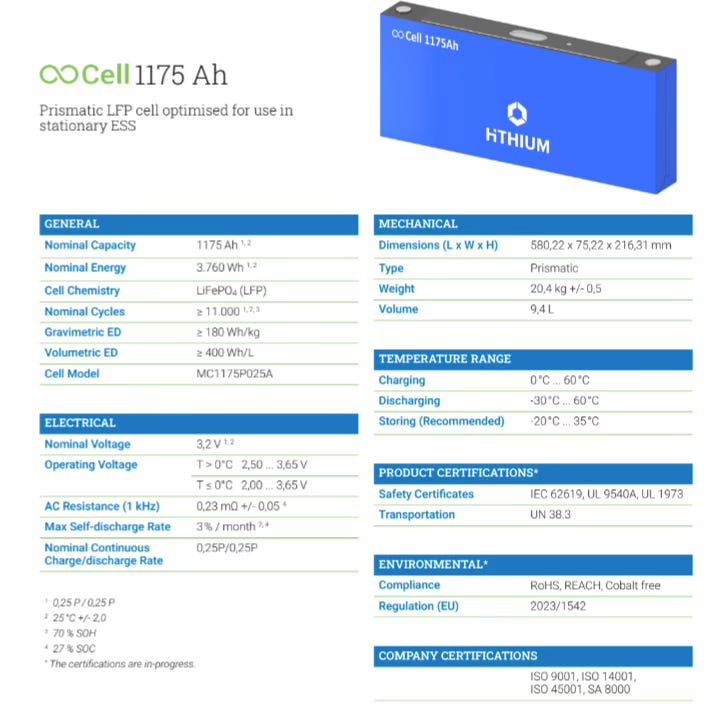CATL is pushing the limits of energy storage. Here’s what’s new
The ESS market is evolving fast.
Welcome back to another edition of my newsletter! - Week 19 2025
The ESS market is constantly evolving, much like the EV market. New products are frequently introduced, and BESS solutions are becoming increasingly larger.
Summary
The highlight of the week: CATL is pushing the limits of energy storage
Battery Industry Pulse: Weekly Roundup.
The highlight of the week: CATL is pushing the limits of energy storage
CATL unveiled a new product, again.
This time, it was not for the EV market but for the ESS market.
CATL has launched the TENER Stack, the world’s first 9MWh energy storage system designed for mass production. It was officially unveiled at ees Europe 2025.
The product will feature CATL LFP cells and five-year zero-degradation technology. Higher performance is possible, but not pursued due to cost considerations.
“Theoretically you can go higher but you need to balance technical performance and cost. The prelithiation process is done at one of our product lines and the whole process is more complicated and costs much more than conventional lithium-ion chemistry. We could go to six years or more but considering the cost increase it isn’t that attractive to the industry right now.” said by CATL’s CTO ESS Europe Hank Zhou (shared by Energy-Storage.news)
But how did CATL launch a 9 MWh ESS product?
CATL has developed a two-in-one design. Each half-height unit is strictly controlled to under 36 tonnes, appearing as two 4.5 MWh containers stacked. This design ensures compliance with transport regulations across 99% of global markets.
It's a modular approach rather than standard 20 foot container.
According to CATL, TENER Stack offers:
Increased energy density and improved volume utilization compared with a 20 ft container
Enhanced land-use efficiency
Optimized total station construction costs
Reduced waiting times and specialized transport costs
Advanced safety standards and thermal management
If you want to know more about this product’s benefits, download the summary document below:
One thing still raises questions: safety. Stacking two containers can be risky. Some authorities, especially European ones, might not approve. But I’m not worried, as CATL, a strong leader, has probably thought it through. In 2024, CATL shipped 110 GWh of batteries for the ESS market. CATL is by far the undisputed battery leader in both EV and ESS markets, reaching around 38 % combined market share (according to SNE Research).
The ESS market is moving toward larger products. CATL isn’t the only one offering large BESS containers:
Fluence with its SmartStack: 7.5 MWh BESS container.
EVE Energy with Mr Giant: 5 MWh BESS container.
IPS has developed an 8.1 MWh BESS container.
Gotion launched recently 7 MWh BESS container.
Hithium with ∞Power 6.25MWh 2h/4h high-capacity BESS.
Envision unveiled last year 8 MWh grid-scale BESS.
And many more…
A 5 MWh container is the market standard, offering a balance between capacity and scalability. However, players are pushing for ever-larger systems. BESS products are clearly trending toward 10 MWh energy storage.
"9 MWh is not the limit of the energy capacity or space. Every breakthrough in energy density in the future will unleash greater energy value from a smaller footprint." - Hank Zhao, CTO of ESS Europe CATL.
The cells are also getting bigger. Standard cells for ESS now range from 280 to 314 Ah, and the next generation is pushing beyond 500 Ah. EVE Energy has already developed cells reaching 628 Ah.
Hithium has gone even further, creating a 1,175 Ah cell specifically for long-duration ESS applications.
The ESS market is evolving quickly. It’s now the second largest demand driver for batteries, and it’s more open to diverse battery technologies. Lithium ion batteries currently dominate, particularly LFP chemistry, though other technologies such as sodium ion, zinc, and flow batteries are also gaining traction in the industry.
Due to its scale, longevity, and cycle life, the LFP battery is the most suitable product for the ESS market.
Developers focus on cost per cycle, and LFP batteries are currently very cost effective.
Competition among battery suppliers in the ESS market is intense.
Chinese battery makers (CATL, EVE Energy, Hithium, BYD, Gotion, CALB, REPT, etc.) have emerged as clear winners thanks to China’s robust LFP supply chain.
Non Chinese battery companies are struggling. Panasonic has even decided to exit this business.
However, LG Energy Solution wants to keep pace by adding LFP chemistry to its portfolio. It appears to be working. LGES has signed an agreement with PGE to supply 981 MWh of grid scale ESS batteries between 2026 and 2027. The cells and systems will be produced at its Wrocław facility in Poland, with production starting later this year. They are also developing ESS battery production lines in Michigan, USA, where the ESS market is more developed than in Europe.
Like the EV market, the ESS sector is fascinating. Batteries continue to play a pivotal role in revolutionizing the industry.
Now, let’s look at this week's battery market developments.
Battery Industry Pulse: Weekly Roundup
Raw Materials
Components
Battery
Nissan scraps plans for Japanese LFP battery plant in struggle for survival
Panasonic is cutting 10,000 jobs in a bid to boost efficiency
Electrovaya Announces Start of Battery System Manufacturing in Jamestown, NY
SK On Presents New Research Advances in Solid-State Batteries
Battery Equipment
LG Energy and Hyundai Motor begin equipment placement at US factory
Wonik PNE wins formation kit order from Samsung SDI, General Motors
Passengers Cars
Don’t hesitate to leave a comment or reply to this email to share your feedback. My goal is to make the best newsletter for you.







Super excited for Foxconn's entry into the EV space. That would be amazing for new EV start-ups.